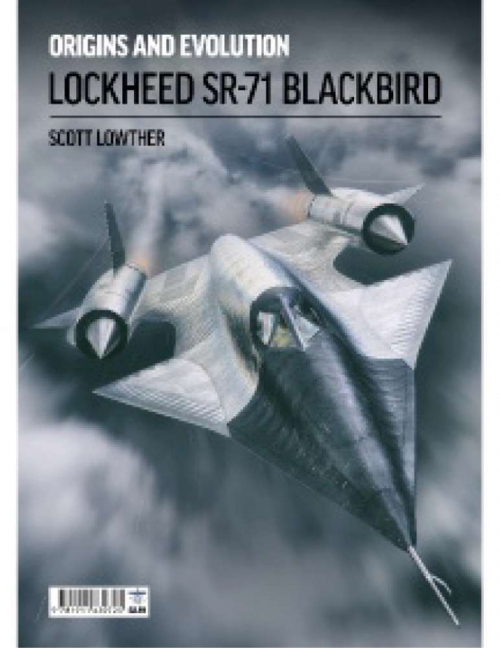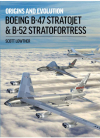Here are some screenshots snagged from a not-quite-final version of the book, showing the sort of content you can expect from the final product.
As before it is available for pre-order from both the publisher and from Amazon:
Here are some screenshots snagged from a not-quite-final version of the book, showing the sort of content you can expect from the final product.
As before it is available for pre-order from both the publisher and from Amazon:
The German V-1 “Buzz Bomb” was a relatively simple weapon, and one that a sufficient number were found sufficiently intact that the Allies were able to reverse engineer. In the US, copies of the V-1 were built by Republic Aviation by September of 1944 as the Jet Bomb-2 “Loon.” The V-1 was found to be a crude weapons, inaccurate and not particularly spectacular… but it was cheap and unmanned. In late 1944 the US was staring down the barrel of Operation Downfall, the forthcoming invasion of Japan. Nobody was quite sure how that was going to go; the only thing the expert were sure of was that it would be a bloodbath. So a stand-off weapon that could be launched in *vast* numbers to saturation-bomb Japanese targets while putting approximately zero American lives in harms way? It was an easy sale.
The JB-2 was externally nearly identical to the V-1 but had an active guidance system, theoretically making it more accurate than the fairly dumb V-1. But even with a radar-based guidance system the JB-2 was meant to be built in large numbers… the goal of 1,000 units per month by April, 1945. However, by the end of the war only a little over 1,300 had been built. Exactly how to use the JB-2 does not seem to have been nailed down; one reasonable notion was to use it as a “harassment” weapon: on days when cloud cover negated manned bombing missions, the Japanese might be expected to be scurrying around rebuilding and reprovisioning and generally getting stuff done… and then here come the buzz bombs.
Problem was, simple as the V-1 was, getting the thing to work right was not so simple. Testing of the JB-2 continued to about 1950, by which time it was woefully obsolete and was being used as an aerial target. But early on, simply getting the thing into the air, never mind flying stably, was a chore.
A Grumman design from the 80’s (looks like 1980) for an advanced fighter. This was clearly from the era where fighters did not need to prioritize stealth over all else, though also clearly stealth aspects are included. The aircraft had missiles integrated onto the back surface, an unusual location; it appears that these are unpowered bombs, using wings to generate lift to fling themselves upwards. It’s not immediately clear what the purpose here is; chances are that these might be nukes, so flinging the bombs upwards would give the jet a few moments to gain some distance before the bombs glide down to the ground. Or it might be a low-observability feature… launching from the top would allow the aircraft to fly at a stupid-low altitude to avoid anti-aircraft systems.
The National Museum of the USAF has recently posted some interesting videos of their XB-70. Something the museum seems to be doing is filming their exhibits using drones; the angles aren’t always the best, but they do provide angles rarely seen before.
Mortons has posted a preview “sampler” of my “Lockheed SR-71 Blackbird” bookazine. You can take a look and see if it’s for you.
It is available directly through the publisher for £8.99 (Approx $12.41 or €10.34). It is also available through Amazon for pre-order for $12.99. Direct from the publisher should be available sooner; from Amazon, lower mailing cost if you’re in the US.
Mortons has announced my “bookazine” Lockheed SR-71 Blackbird – Origins & Evolution, now available for pre-order. This is my first published book. Woo! It covers the development of the SR-71 from well before the program started , including the “Suntan” concepts and several Convair high speed reconnaissance platforms, up through the development of the “Archangel” series that led to the CIA’s A-12, through the Mach 3 interceptor designs and the SR-71 itself. From there it also includes a number of proposed derivatives and unbuilt concepts… an A-12 used to launch satellites, the SR-71 as a carrier for a manned hypersonic scramjet vehicle, the use of the “SR-71C” as a flying wind tunnel, etc.
It is available directly through the publisher for £8.99 (Approx $12.41 or €10.34). It is also available through Amazon for pre-order for $12.99. Direct from the publisher should be available sooner; from Amazon, lower mailing cost if you’re in the US.

Here are some shots of a few pages to give you an idea of what’s in it. I created all the diagrams within, based on official sources and as accurate as I could make them. There are many, MANY diagrams here describing designs mundane and downright wacky, from tiny unmanned drones to truly gigantic hydrogen-fueled monsters.
Tell your friends!
Here is an incomplete look at the diagrams created for my first book, “Boeing B-47 Stratojet and B-52 Stratofortress; Origins & Evolution.” It can be pre-ordered either directly from the publisher (with publication expected in late September) or through Amazon (looks like they’ll have it two months later). It is also expected to be on certain store shelves… more on that when it’s confirmed.
A few of these diagrams will be compressed to several-per-page; a few of them here are already shown in multiple optional layouts. But there are also a dozen-ish diagrams *not* shown because they are incomplete as yet. This gives an indication of the size and scope of the project…
My publisher has gone public with Book One, entitled
Woo!
It is being published by Mortons out of Britain, is scheduled for release at the end of September, and is going to be around 250 to 280 pages (I’m still furiously working away at it). As those who have seen my work may assume, it will be loaded to the gills with diagrams, in this case covering the competitors to the B-47 and B-52, the original concepts, how the designs evolved and many of the proposed and built derivatives. You can pre-order at the link above. I’m getting confirmation on availability in the States… Amazon and Barnes & Noble and other sources. Will report back on that, but it does look like both outlets will carry it.
I will post more details – including glimpses of diagrams and some of the color art created for the book by Rob Parthoens – in the coming days. Feel free to ask questions.
Note: Book Two has not yet gone public. But Book Two should be published *first* since it is finished and edited; I’ve seen and approved the layout. All it’s missing right now is cover art, which is in process.